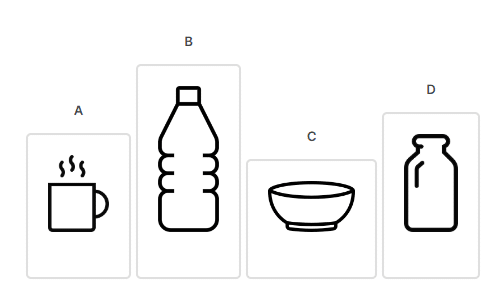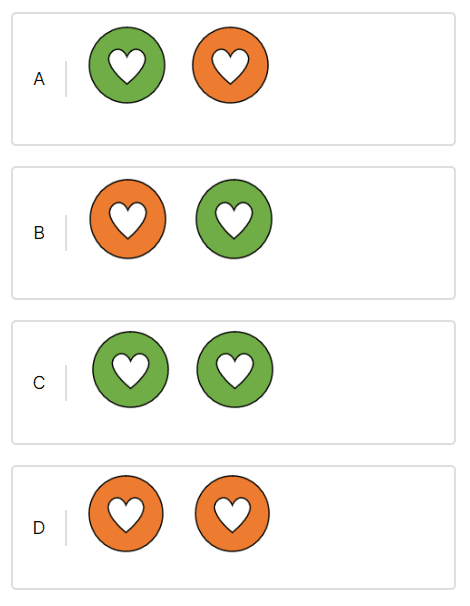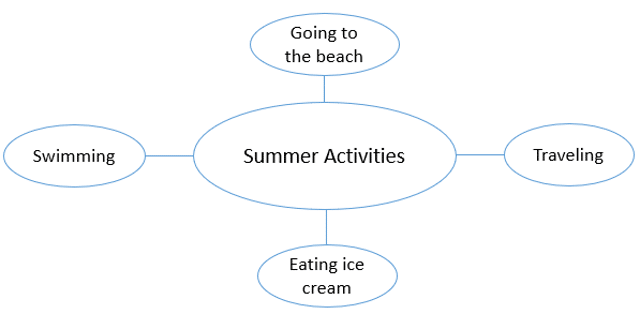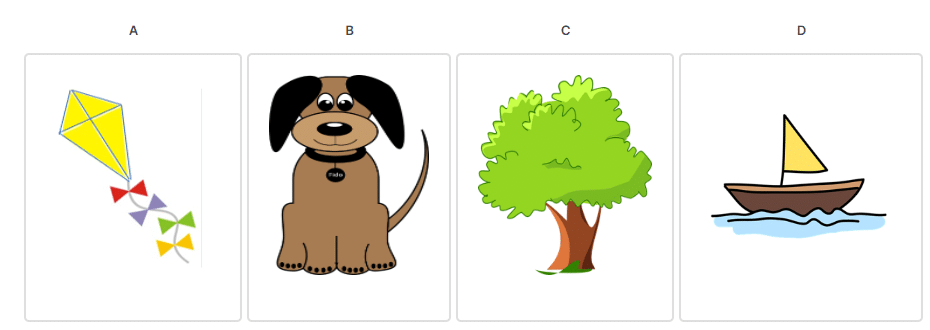MAP Test 1st Grade: Free Practice, Scores & Preparation Tips
Welcome to your comprehensive practice guide for the NWEA MAP test for 1st grade.
Below you’ll find everything you need to maximize your child’s score potential, including:
- In-depth overview with important things to know
- Free practice test
- Scores interpretation
- Recommendations for accurate practice tests
- And more…
So if you’re serious about helping your child prepare and score high, you’ll love this guide.
Let’s dive right in!
What’s on This Page
What Is the NWEA MAP Growth Test for 1st Grade?
The NWEA MAP Growth Test for 1st Grade is a valuable tool designed to assess your child’s academic progress throughout the school year. Unlike traditional assessments, MAP (Measure of Academic Progress) is an adaptive test, meaning it tailors questions to your child’s skill level.
Understanding the Purpose
The primary purpose of the MAP Growth Test is to provide educators and parents with insights into a child’s academic strengths and areas that may need improvement. By understanding where your 1st grader excels and where they may face challenges, teachers can tailor instruction to meet individual needs, fostering a more effective learning experience.
How Does It Work
One unique aspect of the MAP Test is its adaptive nature. As your child progresses through the assessment, the difficulty of the questions adjusts based on their responses. If they answer a question correctly, the next question may be more challenging. Conversely, incorrect answers lead to slightly easier questions. This adaptive approach ensures a precise evaluation of your child’s skills, preventing them from feeling overwhelmed or bored.
Here’s an example of how the adaptivity concept works:
| Question Number | Child’s Response | System Response | Next Question Difficulty |
|---|---|---|---|
| 1 | Correct | Increase difficulty | Moderate |
| 2 | Incorrect | Decrease difficulty | Easy |
| 3 | Correct | Increase difficulty | Challenging |
| 4 | Correct | Increase difficulty | Advanced |
| 5 | Incorrect | Decrease difficulty | Moderate |
Subjects Covered
The MAP Growth Test for 1st Grade covers key subjects essential for their academic development. These include Mathematics and Reading.
In the Math section, your 1st grader will encounter questions that cover a range of topics such as number sense, operations, measurement, and geometry.
For the Reading section, the test evaluates your child’s reading comprehension, phonics, and vocabulary skills.
Take a Free MAP 1st Grade Practice Test
Math Sample Questions
Sample Question #1
Which container can hold the most liquid?

Correct Answer & Explanation:
The correct answer is B.
Try to imagine filling all the containers above with water; the bottle in answer B will hold the most amount of water.
Sample Question #2
What is the answer to the following problem?
8 + 2 = __
A. 6
B. 7
C. 8
D. 9
E. 10
Correct Answer & Explanation:
The correct answer is E.
This is an addition exercise, in which you have to add 2 to 8 (you can use your fingers to help you count).
Therefore, the correct answer is 10.
Sample Question #3

What is the correct way to continue the pattern above?

Correct Answer & Explanation:
The correct answer is B.
This pattern has a rule: the first circle is orange, the second is green, and then it repeats (orange, green, orange, green…)
The last circle in the pattern above is green, so the next two circles must be: first orange and then green, like in answer B.
Get 7 additional MAP 1st Grade math practice tests to improve your child’s problem-solving abilities.
Reading Sample Questions
Sample Question #1
Look at the chart:

A. Swimming
B. Going to the beach
C. Summer activities
D. Travelling
E. Eating ice cream
Correct Answer & Explanation:
The correct answer is C.
The chart in the question is called a graphic organizer, which is a visual tool that helps to organize information.
In this graphic organizer, the middle circle represents the main topic, and the circles around it are ideas related to the main topic.
Therefore, the main topic of the graphic organizer is “Summer Activities”.
Sample Question #2
Look at the signs. Choose the exclamation mark:
A !
B .
C ?
D ,
Correct Answer & Explanation:
The correct answer is A.
The sign of an exclamation mark is “!”
Sample Question #3
Which of the following words begins with the sound that the letter “K” makes?

Correct Answer & Explanation:
The correct answer is A.
The picture in answer A is a kite, which starts with the sound /K/.
Answer B is incorrect because the picture is of a dog, which starts with the sound /D/.
Answer C is incorrect because the picture is of a tree, which starts with the sound /T/.
Answer D is incorrect because the picture is of a boat, which starts with the sound /B/.
Get More Practice Resources to Help Your Child Score High
Helping your child succeed in the MAP test is all about regular practice. The more they get used to different types of questions, the more confident and ready they’ll feel when the actual test day comes around.
A great way to achieve this is by doing practice tests that cover a variety of question types and difficulty levels similar to the ones in the real exam. Several online platforms are offering these, but we discovered that TestPrep-Online is a standout choice.
They’ve got over 250 practice questions, including both recorded and text-based ones, and they provide really helpful explanations. It’s a solid way to prep your child for success in a friendly and effective manner.
Get 250+ MAP 1st Grade practice questions to maximize your child’s score potential.
Understand What the MAP Test 1st Grade Scores Mean
When it comes to your child’s MAP Test scores in 1st Grade, understanding what these scores mean is key to supporting their educational journey.
RIT Scores and the RIT Scale
RIT scores and the RIT scale play a crucial role in interpreting your child’s performance. RIT stands for “Rasch Unit,” and it measures student growth over time. The RIT scale is a way to quantify this growth, providing a consistent measure that allows you to track progress from one grade to the next.
Understanding Percentiles
Percentiles offer another perspective on your child’s performance. A percentile score indicates the percentage of students who scored lower than your child. For instance, a percentile score of 60 means your child scored higher than 60% of students who took the test. It’s a helpful benchmark to gauge your child’s standing compared to their peers.
What Is a Good MAP Score for First Grade?
Generally, a good score indicates that your child is progressing well in their academic journey. For first grade, a RIT score within the range of 171 to 190 is typically considered above average, suggesting that your child is meeting or exceeding grade-level expectations.
Interpreting the Scores
Understanding the context of your child’s scores is crucial. Consider not just the individual scores but also the patterns and trends over time. Are they consistently improving, or do certain areas require more attention? This holistic approach gives a fuller picture of your child’s academic journey.
Here are specific examples of how to interpret the RIT scores:
- Individual RIT Scores:
- Below 160: This may indicate that your child is working below grade level in certain areas.
- 160-190: Within or slightly above the expected range for first grade.
- Above 190: Demonstrates advanced skills for their grade.
- RIT Growth Over Time:
- Consistent Improvement: If your child’s RIT scores show a steady increase over testing periods, it suggests positive academic growth.
- Plateau or Decline: A plateau or decline may indicate the need for targeted support or exploration of different learning approaches.
What You Can Do Once You Receive Your Child’s Scores
Once you receive your child’s MAP Test scores, there are proactive steps you can take. Schedule a meeting with their teacher to discuss the results and gain insights into areas of strength and areas that might need focus. Collaborate with educators to create a tailored plan that supports your child’s learning needs. Remember, these scores are tools for guidance, not strict labels.
Overview of the MAP Test 1st Grade Math Section
The 1st Grade Math Section of the MAP Test is designed to evaluate your child’s mathematical proficiency with approximately 43 questions. These questions encompass a diverse range of topics, ensuring a comprehensive assessment of various math skills.
Skills Tested
| Skill Category | Question Types | Examples |
|---|---|---|
| Computation and Problem Solving | Calculations with Basic Operations, Applying Properties of Computation to Solve Word Problems | Calculate the total number of candies if you have 4 and give away 2. |
| Number Sense | Identifying, Counting, Comparing, and Ordering Numbers | Determine which group has more birds: 7 or 10. |
| Measurement | Understanding Concepts of Length, Area, Time, Temperature, etc. | Point to the object with the shortest length in the set. |
| Geometry | Identifying 2-D and 3-D Figures, Symmetry, and Congruence | Match the everyday object to the correct geometric shape. |
| Statistics and Probability | Interpreting Simple Graphs, Determining the Likelihood of Events | Analyze the graph. Which color appears most frequently? |
| Algebra | Applying Algebraic Concepts such as Equivalence and Patterns | Identify the pattern in the sequence of animals. |
To ensure effective preparation, focus on reinforcing fundamental math operations, numerical concepts, measurement, geometry, statistics, probability, and basic algebraic principles.
To learn more about this section and take additional sample questions, visit our MAP 1st Grade Math test guide.
Overview of the MAP Test 1st Grade Reading Section
The MAP 1st Grade Reading Section, comprising approximately 43 questions, is designed to assess various facets of early literacy. The evaluation covers a range of skills aimed at fostering a comprehensive understanding of your child’s reading skills.
Skills Tested
| Skill Category | Question Types | Examples |
|---|---|---|
| Phonology and Phonics | Distinguishing Between Different Sounds, Understanding Vowels, Consonants, Syllables, and Rhyming Words | Identify a word that rhymes with ‘frog.’ |
| Concepts of Print | Understanding the Hierarchy Between Letters, Words, and Sentences, Recognizing Book Characteristics and Structure | Point to the last word in the sentence. |
| Word Structure and Meaning | Applying Prefixes and Affixes, Inferring Word Meanings from Context, Recognizing Synonyms and Antonyms | What is the meaning of the word ‘unhappy’ based on the context? |
| Comprehension | Listening and Reading Comprehension, Identifying Story Characteristics like Setting and Characters | Where does the main character live in the story? |
| Writing | Correct Usage of Capitalization, Punctuation, Spelling, Verb Tenses, Distinguishing Between Different Parts of Speech | Select the sentence with the correct punctuation. |
It’s essential to note that questions are recorded, allowing your child to listen to them again if necessary. Enhance their listening comprehension by engaging in activities such as reading stories aloud and posing questions to support their preparation effectively.
To learn more about this section and take additional sample questions, visit our MAP 1st Grade Reading test guide.
9 Actionable & Fun Tips to Help Your Child Prepare
Create a Daily Reading Routine
Reading is a fundamental skill that forms the basis of many test questions. Establishing a daily reading routine not only enhances your child’s literacy but also prepares them for questions related to comprehension and vocabulary.
Examples:
- Engage in a bedtime story ritual. Choose books with vibrant illustrations and discuss the characters and plot to encourage comprehension.
- Turn everyday situations into learning opportunities by pointing out words on food labels or street signs.
- Extend the reading experience by asking questions about the story after finishing. This promotes critical thinking and verbal expression.
Turn Math Practice into a Game
Transforming math practice into a game adds an element of fun to learning numerical concepts and problem-solving skills.
Examples:
- Use board games that involve counting, addition, or subtraction to reinforce math skills.
- Incorporate math into daily activities, such as measuring ingredients while cooking or counting objects during playtime.
- Explore math apps and online games that make learning numbers an interactive and enjoyable experience.
Word-Wizard Vocabulary Challenge
Make building vocabulary an exciting challenge with a Word-Wizard-themed game.
Examples:
- Create flashcards with interesting and challenging words.
- Turn the learning process into a game, challenging your child to spell and define each word.
Explore Through Outdoor Measurement
Combine the outdoors with learning by developing measurement and observation skills through exploration.
Examples:
- Measure objects with a ruler or compare sizes in the backyard.
- Foster a keen sense of measurement through real-world exploration and discovery.
Rhyme Time Musical Adventure
Enhance phonics and creativity through a rhythmic rhyming activity that turns learning into a musical adventure.
Examples:
- Choose a word and find rhyming words to create a fun song or rap.
- Make the learning process musical and enjoyable, incorporating rhythm and creativity.
Number Scavenger Hunt
Transform everyday life into a numbers adventure with an interactive number scavenger hunt.
Examples:
- Hunt for numbers in daily situations, from grocery stores to street signs.
- Identify and add up the numbers found, making learning numbers engaging and hands-on.
Dive into Story Setting Exploration
Improve comprehension and imagination by exploring story settings together.
Examples:
- Choose a story and discuss its setting with your child.
- Draw or create the world of the story together, enhancing comprehension skills and encouraging creativity.
Punctuation Playtime
Playfully reinforce proper punctuation through interactive games.
Examples:
- Provide sentences with missing punctuation for your child to correct in a fun and engaging way.
- Turn punctuation practice into a game by letting them choose the correct punctuation mark.
STEM Snack Attack
Introduce basic math concepts through cooking adventures with a STEM Snack Attack.
Examples:
- Create snacks together, incorporating shapes and patterns to reinforce math skills.
- Make the cooking experience educational and delicious, turning it into a practical math lesson.
These actionable tips not only make preparation enjoyable but also contribute to a positive and engaging educational experience for your child.
Conclusion
Congratulations on taking the first step towards ensuring your child’s success in the NWEA MAP test for 1st grade! This comprehensive guide equips you with everything you need, from valuable insights into the test’s adaptive nature to practical tips, MAP sample questions, and resources for effective preparation. Remember, learning is a journey, and with the right tools and a positive approach, your child is not just preparing for a test but embracing the joy of education.
